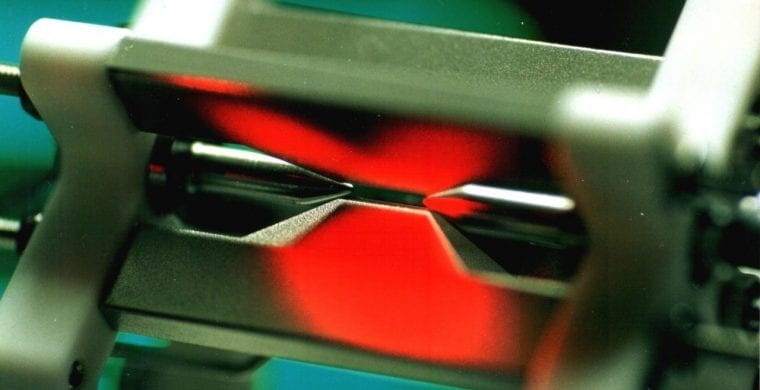There’s an interesting fact about humans: most of us are wired to be skeptics. It really doesn’t matter what it is about… from climate change to religion, science to quantum computing, being skeptic comes naturally to us.
IBM Mainframes
Here’s what people said about computers half a century ago:
“I think there is a world market for maybe FIVE computers.”
– Thomas Watson, chairman of IBM, 1943
“Computers in the future may weigh no more than 1.5 tons.”
– Popular Mechanics, 1949
“I have traveled the length and breadth of this country and talked with the best people, and I can assure you that data processing is a fad that won’t last out the year.”
– The editor in charge of business books for Prentice Hall, 1957
“There is NO reason anyone would want a computer in their home.”
– Ken Olson, chairman & president of Digital Equipment Corp., 1977 (Laugh)
It’s easy to laugh at these comments today, but back in the day, experts made these serious and supposedly learned observations.
So, where are the 1.5 ton computers?
Michigan Micro Mote on Penny
The Michigan Micro Mote (M3 or M cube) is the smallest autonomous computer in the world. Its creators managed to get M3 down to just 1 millimeter3 that comfortably sits on the edge of a coin.
Researchers at the University of Michigan worked on M cube to support the IoT devices. M3 can seamlessly connect and interact to make everyday objects such as a toaster, washing machine, or doorknob intelligence.
Despite its tiny size, M3 has the ability to take pictures, read temperatures, and record pressure readings. It can even be injected into the body, where it can perform ECGs and other measurements.
It might be really miniscule, but M3 is far from the idea of quantum computing. That brings us to D-Wave.
D-Wave: Is Quantum Computing Already Here?
Maybe there is good reason to be skeptical. Just look at the D-Wave system, proclaiming to be the world’s first commercialized quantum computer. By the way, do you see the similarity with the IBM mainframe from the 1960’s?
Is the D-Wave system actually quantum? It might solve problems, but if noise was disentangling the qubits—the quantum computing equivalent of bits used in traditional computing—it’s just an expensive classical computer, operating adiabatically but not with quantum speed. To test this, Daniel Lidar, a quantum scientist at USC, ran thousands of instances of a problem on the D-Wave. He then charted the machine’s “success probability”—how likely it was to get the problem right—against the number of tries. The final curve was a U shape. This means that, most of the times, the machine either entirely succeeded or entirely failed.
When Lidar ran the same problems on a classical computer with an annealing optimizer, the pattern was different. The distribution is clustered in the center, like a hill. The D-Wave didn’t behave like an old-fashioned computer. Although the results were “reasonable evidence” of quantum behavior, did it really qualify as a quantum computer? They tested it against an Intel desktop machine, and it turns out the D-Wave isn’t any faster. There was no evidence of quantum speedup.
The other problem was the amount of time the D-Wave needs to solve increases at roughly the same rate as classical computers. If the D-Wave really was harnessing quantum dynamics, you’d expect the opposite. Why wasn’t it productively quantum? Was it that there wasn’t enough “coherence time” so that the quantum state of the niobium loops isn’t sustained?
So, you’re probably thinking, quantum computing is purely theoretical quantum physics and we’ll never see it in our lifetime. Right?
Blueprint for a Large-Scale Quantum Computer
To the dismay of skeptics, quantum computing is witnessing serious and tangible progress.
Until now quantum computers have had just a fraction of the processing power they are theoretically capable of producing. Recently, however, an international team of researchers, led by Professor Winfried Hensinger, head of the Ion Quantum Technology Group at the University of Sussex, believe they have finally overcome the main technical problems that have prevented the construction of an arbitrarily large quantum computer.
In the research publication Science Advances, February 1, 2017, researchers unveiled a blueprint for a microwave-trapped-ion quantum computer. Such a quantum computer lays the foundation to build a large-scale quantum computer. The modular approach makes it possible to create a scalable quantum computer architecture based on long-wavelength radiation quantum gates. The modules control all operations, as microfabrication techniques are used to construct standalone units, something within the reach of current technology.
Implementing a high error–threshold surface error correction code in the proposed architecture can execute fault-tolerant operations. With appropriate adjustments, the proposed modules are also suitable for the alternative trapped-ion, quantum-computer architectures, such as the schemes using photonic interconnects.
This is a not a small quantum computer, but is essentially the full engineering blueprint to build out a full-fledged quantum computer.
Existing quantum computers require lasers focused precisely on individual atoms. Consequently, larger the computer, more lasers it requires and greater is the chance of something going wrong.
These researchers use a different technique to monitor the atoms involving a microwave field and electricity in an ‘ion-trap’ device. The solution allows scalability of computing power.
Many different technologies and approaches are currently competing to build a first large-scale quantum computer. Ion traps were one of the earliest realistic proposals, albeit with a hefty price tag of tens of millions of pounds.
Learn more: https://amyxinternetofthings.com/



